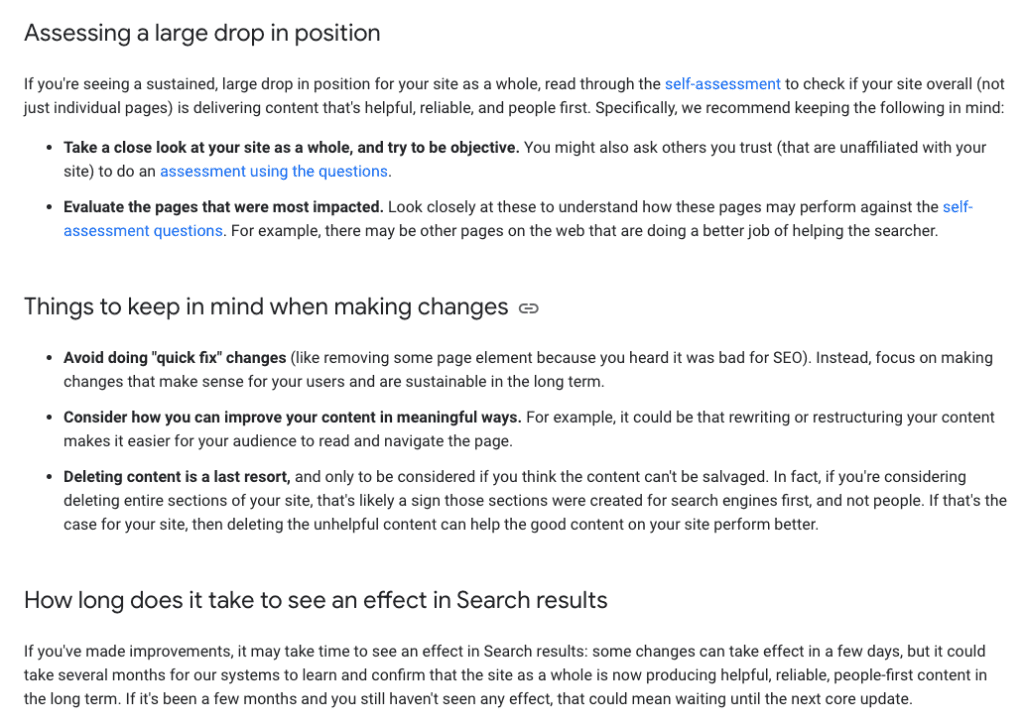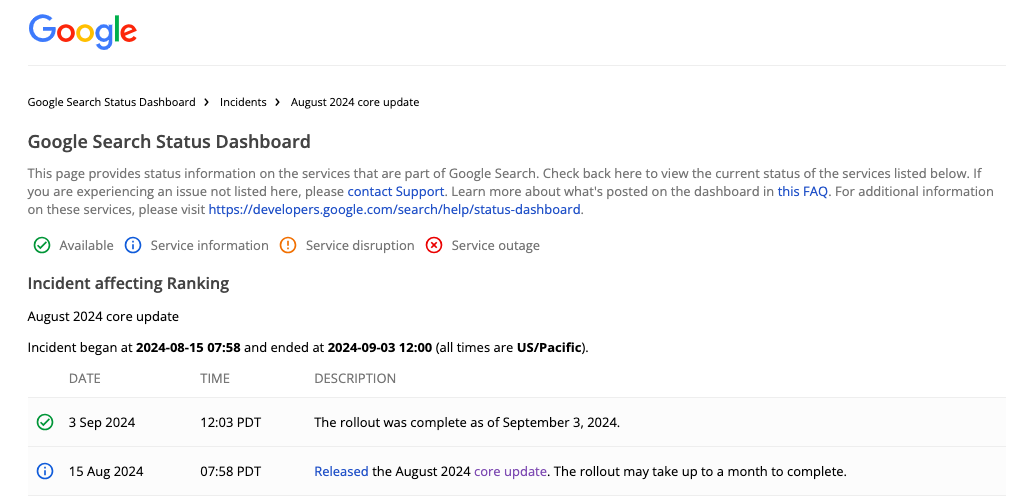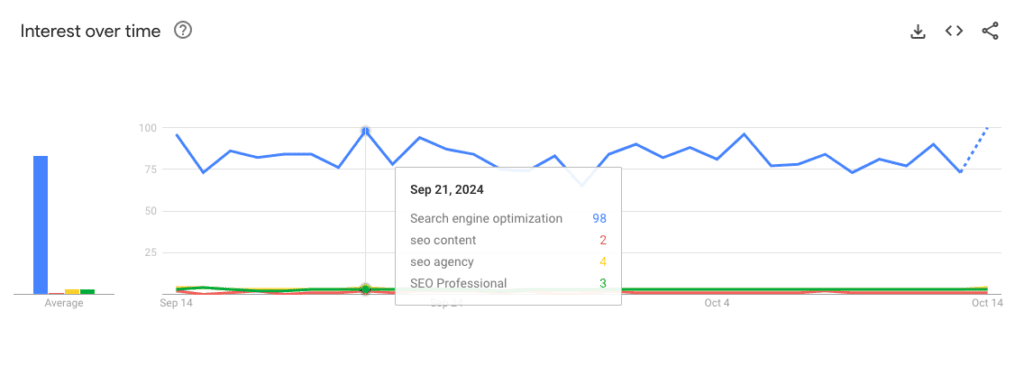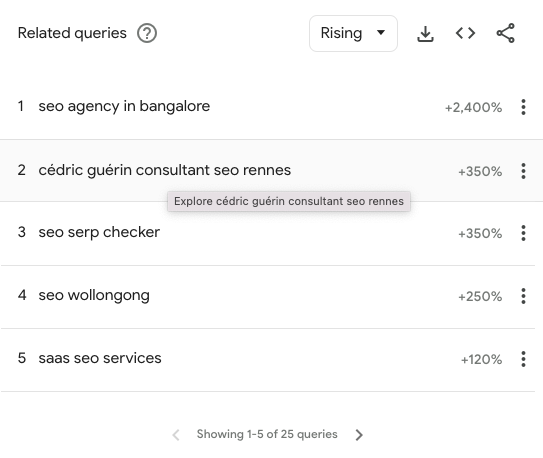Most marketers believe that search engine optimization (SEO) provides the biggest ROI compared to any other strategy. Yet, ranking well on search engines illustrates how competitive and difficult SEO can be. According to Backlinko, the top result on Google gets 27.6% of all clicks. That’s a lot of missed traffic if your business isn’t in that coveted spot.
It is estimated that over 90 percent of all content created for SEO purposes doesn’t receive any organic traffic at all. Double ouch.
While SEO doesn’t present marketers with an upfront cost like a PPC campaign, it arguably requires a larger investment due to the time and resources necessary for effective implementation. SEO is not a “set it and forget it” method. Instead, it demands constant monitoring, analysis, and refinement. From updating content to fixing redirects, SEO specialists are tasked with keeping a pulse on the campaigns and the overall health of a website.
When done right, SEO maintenance yields significant long-term results, including improved brand visibility, sustained audience engagement, and higher conversion rates. In this guide, we’ll share 9 reasons you must prioritize continuous SEO maintenance!

What is SEO Maintenance?
SEO maintenance refers to the ongoing process of monitoring and improving a website’s performance in search engine rankings. It involves regularly checking various elements of your SEO strategy, such as on-page content, technical issues, backlinks, and keyword rankings, to ensure that your site remains optimized according to the latest SEO best practices and algorithm updates.

The goal of SEO maintenance is to sustain and improve the visibility of your website on search engines like Google and Bing. Since search engines are constantly updating their algorithms and users’ search behaviors are evolving, maintaining a solid SEO strategy requires ongoing adjustments. Without regular upkeep, your rankings could slip, potentially leading to decreased organic traffic and visibility.
An SEO maintenance checklist should include:
- Monitoring and adjusting keyword strategies to match changing search intent.
- Updating content to keep it relevant, accurate, and valuable to users.
- Fixing technical issues, such as broken links, 404 errors, and slow page load times.
- Analyzing competitors’ strategies to stay ahead in rankings.
- Building and managing backlinks to strengthen your site’s authority.
- Tracking performance metrics using tools like Google Analytics and Google Search Console to identify areas for improvement.
By making SEO maintenance a continuous effort, businesses can maintain and enhance their online presence, ensuring they remain competitive in their industry. Now, let’s dive into the key reasons why this ongoing effort is so important.
1. Search Engine Algorithm Updates
Search engines like Google and Bing frequently update their algorithms. In 2023, there were 9 official Google algorithm updates. These major updates, which happen several times a year, can cause shifts in how your website performs.

For instance, in 2019, Google introduced the BERT update (Bidirectional Encoder Representations from Transformers). This update focused on understanding the intent behind user queries better, changing the SEO landscape by affecting how search engines ranked content and featured snippets. As a result, businesses had to reassess and adjust their SEO strategies to align with the new algorithm.
Ignoring these updates or failing to adjust your strategy accordingly could cause your rankings to slip, potentially leading to a loss of organic traffic. Continuous SEO maintenance allows you to respond proactively to algorithm changes, ensuring your content remains optimized and competitive.
2. Competitors Are Always Producing New Content
Content is at the heart of SEO. An effective SEO strategy identifies the most relevant keywords and then builds high-quality content around them to meet user intent. Once your content ranks on search engines, the work isn’t done. Competitors are constantly monitoring and aiming to outperform your content by creating their own optimized versions.
This is where continuous content optimization comes into play. By regularly reviewing and updating your existing content, you can stay ahead of the competition. Regularly adding value to your posts, including new statistics, examples, and even additional sections, keeps your content fresh and relevant. Without regular updates, you risk being pushed down the rankings as competitors refine and improve their content.
Continuous SEO maintenance helps ensure that your content remains authoritative and competitive, keeping you ahead in the rankings and securing that valuable traffic.
3. Consumer Search Trends Are Always Changing
The only constant in SEO is change. With over 99,000 searches per second on Google, consumer trends are continuously evolving. What’s relevant today may not be in demand tomorrow. External factors, such as societal shifts or major global events, can rapidly influence what users are searching for.

For example, during the peak of the COVID-19 pandemic, most searches related to coronavirus centered on symptoms, safety protocols, and vaccine development. Fast forward a few years, and search trends around COVID-19 have shifted toward understanding its long-term effects or treatments.
If your content isn’t aligned with changing consumer trends, it risks becoming outdated. SEO maintenance allows you to pivot and adjust your strategy based on new keyword research, emerging trends, and user intent. By analyzing search data regularly, you can ensure your content remains relevant and satisfies current user queries.
4. Technical Issues Need Constant Attention
A significant part of SEO happens behind the scenes, on the technical side. A broken link here, a 404 error there—small technical glitches can significantly impact your website’s SEO performance. Google uses technical signals such as load speed, mobile-friendliness, and the absence of errors to rank websites.
For instance, 404 errors (when a page cannot be found) send negative signals to search engines, indicating poor user experience. Similarly, broken internal or external links lead to lost authority and decreased rankings.
Through regular SEO audits and maintenance, you can detect and address these technical issues before they become problematic. By keeping your website running smoothly, you ensure that search engines see it as a reliable, high-quality site—improving both your ranking potential and user experience.
5. Fresh Content Keeps You Relevant
When it comes to SEO, recency matters. Search engines prioritize websites that provide the most up-to-date, accurate information. In fact, fresh content signals that your business is active, responsive, and committed to providing users with current and relevant information.

Search engine algorithms also tend to favor recently updated content, especially if it addresses trending topics or updated guidelines. Whether it’s adding new information to an older post, refreshing your meta descriptions, or updating internal links, these small yet consistent updates help maintain your site’s relevance and SEO health.
By keeping your content fresh, you demonstrate a commitment to offering valuable information, which increases trust and authority—both key factors in SEO rankings.
6. User Experience (UX) is Key to SEO Success
SEO is no longer just about keywords and backlinks; user experience (UX) has become an integral factor in ranking well on search engines. Sites that load faster, are easy to navigate, and provide a seamless experience across devices rank better in search results.
Google has even introduced Core Web Vitals as ranking factors, which measure elements like page loading speed, interactivity, and visual stability. SEO maintenance ensures that your website is optimized for user experience. This involves checking page load times, improving mobile responsiveness, and ensuring that users can easily find what they need on your site.
The more user-friendly your website, the longer users stay on it, and the more likely they are to engage with your content—all of which positively influence your SEO rankings.
7. Local SEO and Business Listings Change Over Time
If your business relies on local customers, local SEO is critical. Local search algorithms consider your business’s physical location, customer reviews, and citations from online directories like Google My Business (GMB), Yelp, and Bing Places. However, these listings can change, and maintaining accuracy across all of them is a task that requires constant monitoring.
For instance, if your business moves locations or changes operating hours, failing to update this information across local listings can lead to confusion for users and lost traffic. SEO maintenance ensures that your business information is consistent and accurate everywhere it appears online, improving your visibility in local search results and helping potential customers find and trust your business.
8. Backlinks and External Signals Fluctuate
Backlinks—links from other websites pointing to your content—are crucial for SEO. High-quality backlinks from authoritative sites signal to search engines that your content is trustworthy and relevant. However, just as you work to earn backlinks, other sites might remove or alter them over time.

That’s why continuous monitoring of your backlink profile is essential. Links can break, become irrelevant, or be removed without your knowledge. Through regular SEO maintenance, you can disavow harmful links, replace broken ones, and work on building new, high-quality backlinks to maintain or improve your ranking.
Moreover, as search engines increasingly weigh social signals—such as shares, likes, and engagement from social media—keeping an eye on your off-site SEO efforts and adjusting them accordingly is just as important as on-site optimization.
9. Data-Driven Insights Inform Your Strategy
SEO is never static, and one of the greatest benefits of ongoing SEO maintenance is the ability to analyze and leverage data-driven insights. Google Analytics and other SEO tools provide a wealth of information about how users interact with your website, including which pages perform well, which keywords drive traffic, and where users drop off.
By regularly reviewing this data, you can make informed decisions about where to focus your efforts. Perhaps you discover a specific blog post is driving significant traffic, but users aren’t converting. Or, you may notice that certain keywords you’re ranking for are no longer relevant or driving quality leads.
Through continuous analysis and adjustment, you can fine-tune your SEO strategy to not only improve traffic but also increase engagement and conversions.
Need Help with Your SEO Strategy?
At Elevato, we specialize in helping businesses navigate the complexities of SEO and digital marketing. Whether you’re looking to optimize your site, create a long-term SEO strategy, or improve your current rankings, our team of experts is here to help. We understand the importance of continuous SEO maintenance and offer tailored solutions to meet your unique business needs.
Ready to take your SEO strategy to the next level? Contact Elevato today and see how we can help you grow!
